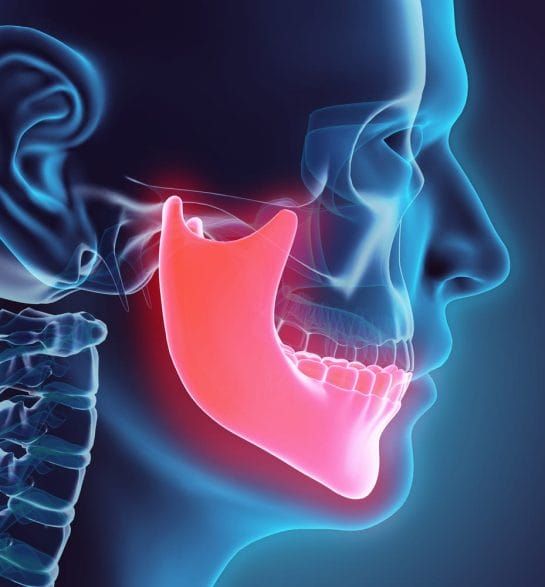
Quels sont les différents types d’opérations maxillo-faciale existantes ?
Plusieurs interventions de chirurgie maxillo-faciale sont actuellement pratiquées par les chirurgiens. Les plus courantes sont les suivantes :
La chirurgie maxillo-faciale de la mâchoire (ou orthognatique)
La chirurgie maxillo-faciale de la mâchoire, aussi appelée orthognatique, est une pratique visant à corriger la position de la mâchoire. Elle permet de rendre le visage plus harmonieux, mais surtout de faciliter des gestes quotidiens, comme la déglutition. Cette intervention est souvent précédée et suivie d’un traitement orthodontique.
L’implantologie dentaire
L’implantologie dentaire est l’une des techniques employées pour combler l’absence de dents. Elle consiste à insérer des dispositifs en titane dans l’os afin qu’ils remplacent la racine manquante. Une fois cicatrisé et soudé, l’implant va ensuite servir de support à une prothèse.
Vous avez des questions sur la chirurgie maxillo-faciale ? Vous souhaitez prendre rendez-vous pour une intervention ? Contactez dès à présent les spécialistes en chirurgie du visage de La Clinique du Lac.
Qu’est-ce que la chirurgie orthognatique ?
Avancement de la mâchoire, mâchoire carrée, mâchoire inférieure trop courte, béance… Non seulement ces malformations sont une souffrance sur le plan esthétique et psychologique, mais elles peuvent aussi être à l’origine de troubles fonctionnels (déglutition, respiration ou mastication).
La chirurgie orthognatique concerne les interventions visant à corriger les malformations ou les déformations accidentelles des mâchoires. Son objectif ? Améliorer le positionnement des dents et des mâchoires. Vous envisagez une chirurgie orthognatique ? Prix, déroulement de l’intervention, principes… Voici tout ce qu’il faut savoir.
La majorité des patients consultent un chirurgien pour une intervention maxillo-faciale à la suite d’un traitement orthodontique. En effet, la chirurgie orthognatique va permettre de résoudre des malformations, modérées à sévères, qui ne peuvent pas être soignées par l’orthodontie. Ceci étant dit, à la suite de l’opération, il est fortement conseillé de poursuivre le traitement orthodontique pour un résultat optimal et pérenne.
Ce type d’intervention est envisageable une fois la croissance terminée, environ à partir de 16 ans.
Lors de cet acte chirurgical, le praticien intervient sur le squelette facial (notamment les os du maxillaire et/ou de la mandibule) pour redonner une bonne position aux mâchoires et/ou aux dents.
Les malocclusions sévères : Il s’agit de malpositions dentaires. Le manque d’espace dans la mâchoire crée des rotations ou des chevauchements des dents. Il arrive que les dents supérieures soient trop en avant ou qu’elles recouvrent celles du bas.
La prognathie sévère : Lorsque la mâchoire inférieure est plus longue que la mâchoire supérieure.
La rétrognathie sévère : Cette malformation désigne une mâchoire inférieure trop courte qui est responsable de troubles fonctionnels, de douleurs et d’une usure anormale des molaires. Une intervention orthognatique, généralement accompagnée d’une génioplastie, est à prévoir.
Dans un premier temps, le chirurgien réalise un bilan. Il va étudier les troubles, l’état des dents et la forme du visage. Lors de cet échange, le patient expose au praticien ses souhaits et motivations, qu’elles soient d’ordre fonctionnel ou esthétique. Pour parfaire ce bilan, des photos, des radios et des moulages sont effectués. Le praticien peut ensuite expliquer le type d’intervention envisagée et les différentes étapes à prévoir. Un devis sur mesure est établi à ce moment-là.
En concertation avec l’orthodontiste, le chirurgien peut demander un traitement orthodontique avant l’opération orthognatique. Il peut aussi recommander de consulter un pneumologue (en cas d’apnée du sommeil, par exemple) ou un kinésithérapeute.
Un bilan préopératoire permet de planifier le déroulement de l’intervention dans ses moindres détails et de calculer la nouvelle position des mâchoires. Le chirurgien peut faire réaliser des guides chirurgicaux qui seront utilisés lors de l’acte chirurgical.
Indispensable, la consultation d’anesthésie doit avoir lieu au moins quinze jours avant l’opération, afin de pouvoir prévoir des examens supplémentaires si nécessaire.
Enfin, une dizaine de jours avant l’intervention, le patient doit avoir consulté son dentiste pour faire réaliser soins et détartrage.
Les interventions de chirurgie orthognatique se pratiquent sous anesthésie générale, soit en ambulatoire (le patient peut rentrer chez lui le soir même) soit lors d’une courte hospitalisation (un ou deux jours).
Le jour de l’opération, il est nécessaire d’arriver à jeun, après avoir pris une douche complète et nettoyé avec soin les dents et le nez.
L’opération dure entre 1 et 4 heures. Le chirurgien maxillo-facial réalise des incisions à l’intérieur de la bouche puis des coupes au niveau des mâchoires. Il va ensuite les positionner comme décidé lors de la consultation préopératoire. Enfin, à l’aide de vis et de plaques, il sécurise les positions des os. Les incisions sont ensuite suturées avec des fils résorbables. Après quelques heures en salle postopératoire, le patient peut rejoindre sa chambre. Il est important de noter qu’il est capable de boire et parler, car les mâchoires ne sont pas bloquées, comme cela pouvait être le cas, il y a plusieurs années.
Il faut compter une période de convalescence de quelques semaines, pendant laquelle la nourriture doit être mixée puis molle.
Compte tenu du fait que chaque chirurgie orthognatique est un acte sur mesure, nous vous invitons à contacter La Clinique du Lac pour obtenir un devis personnalisé.


